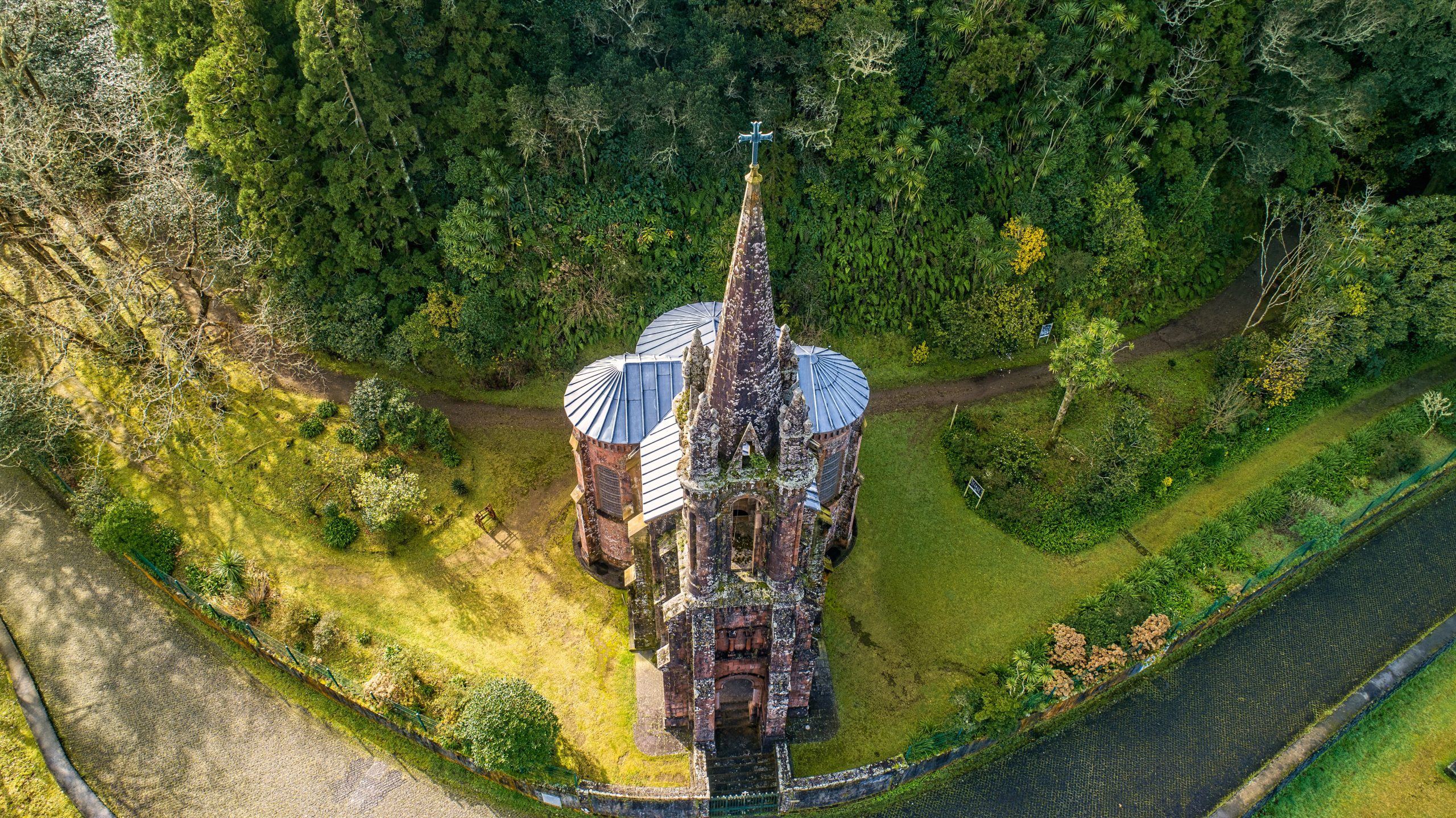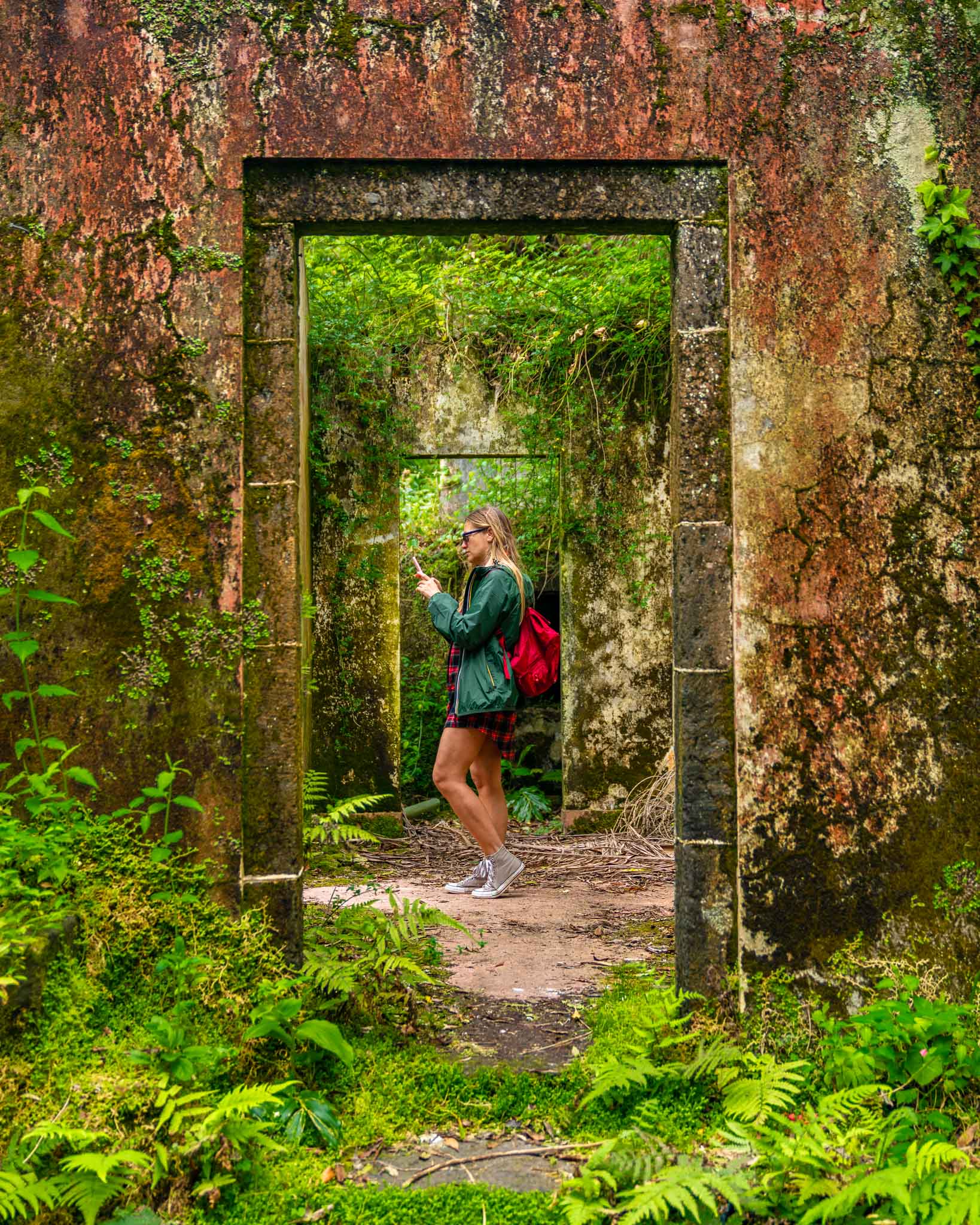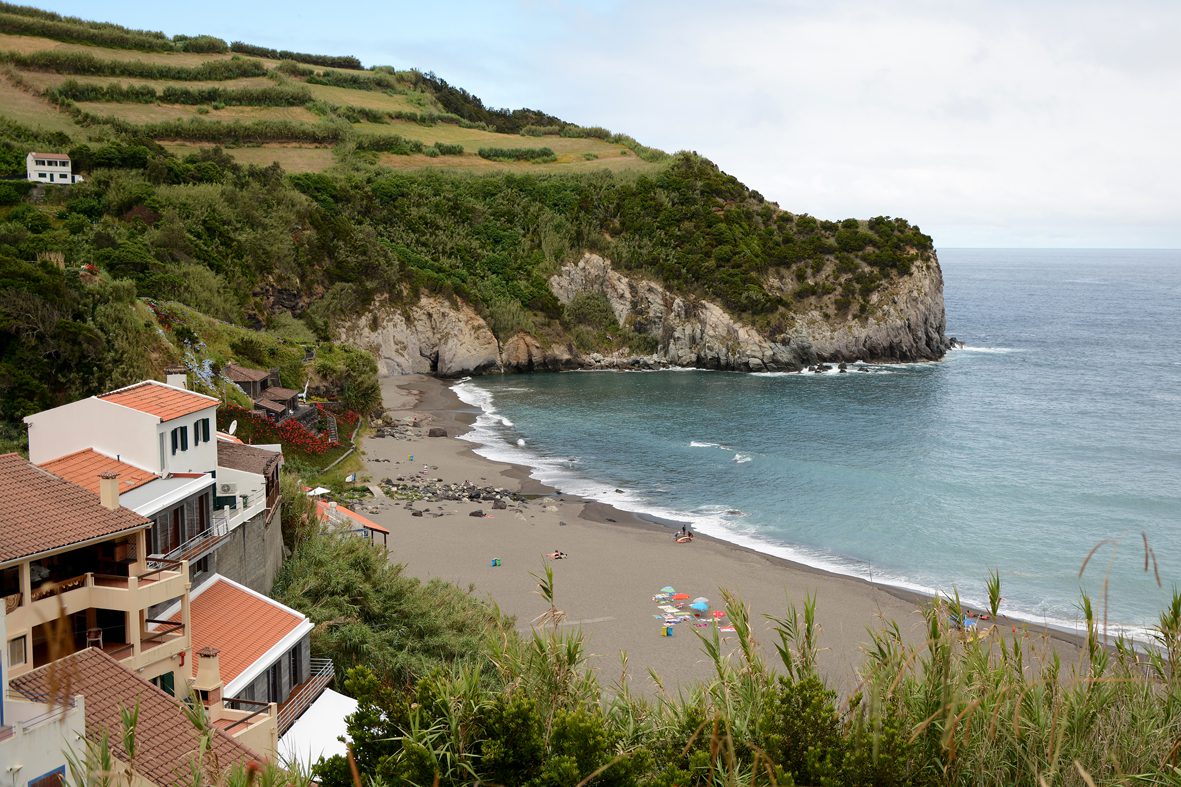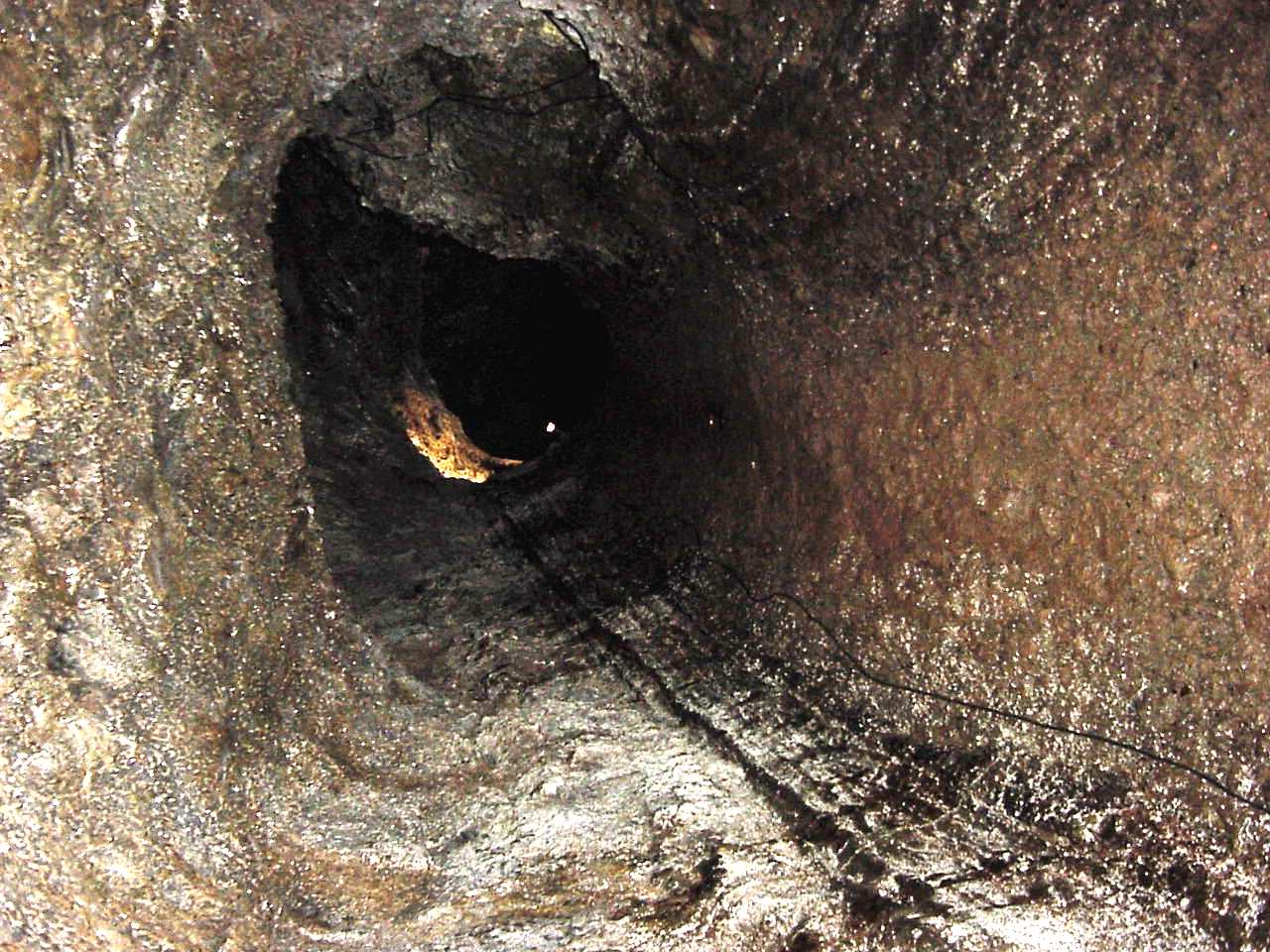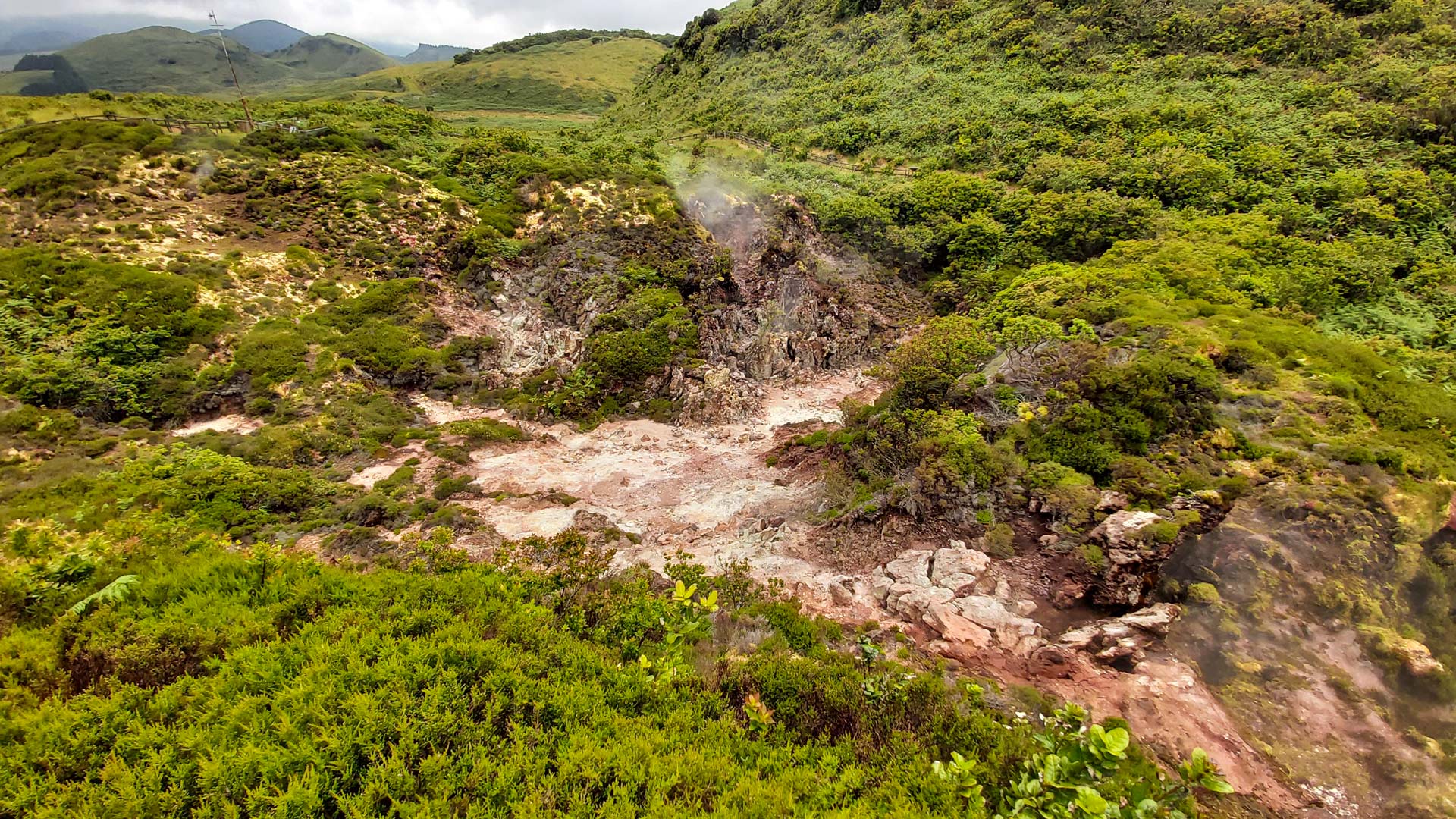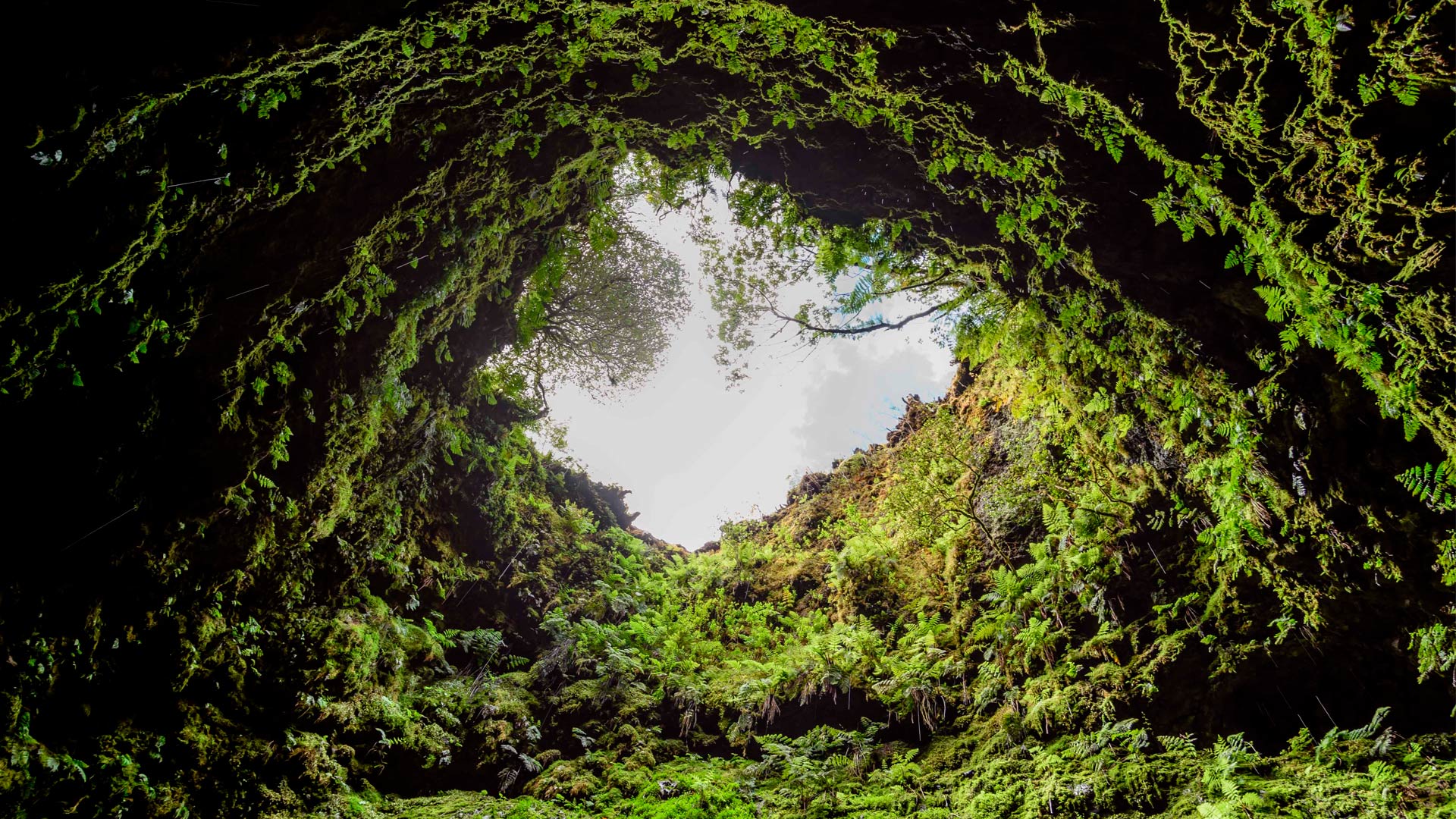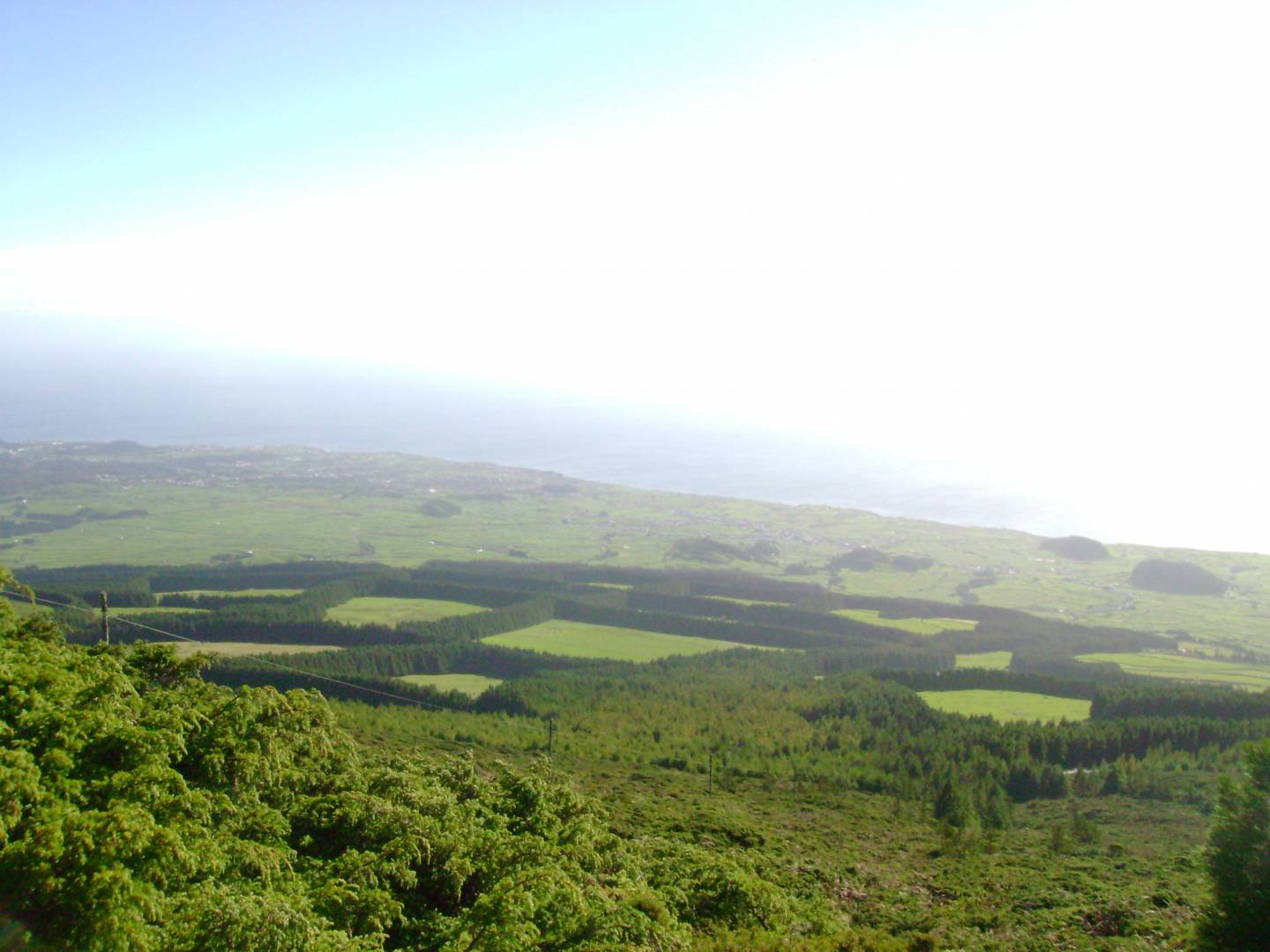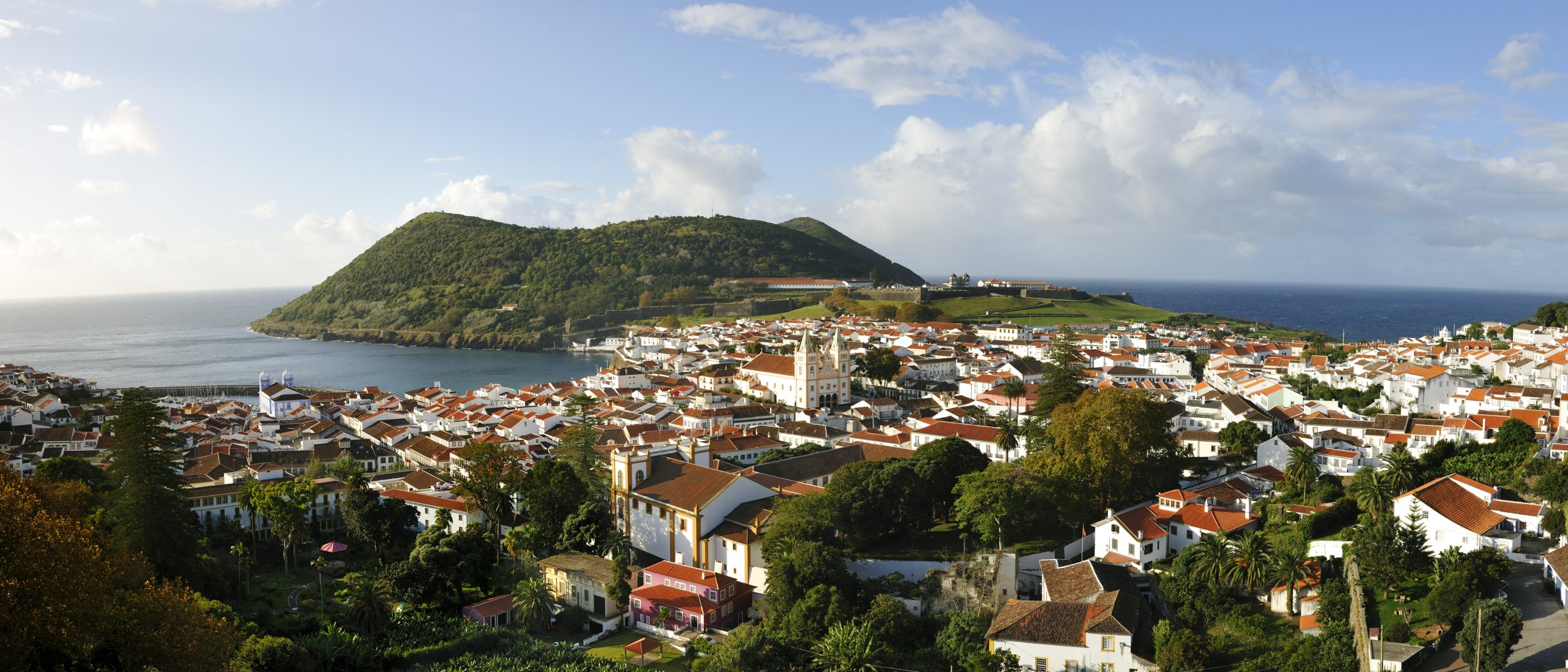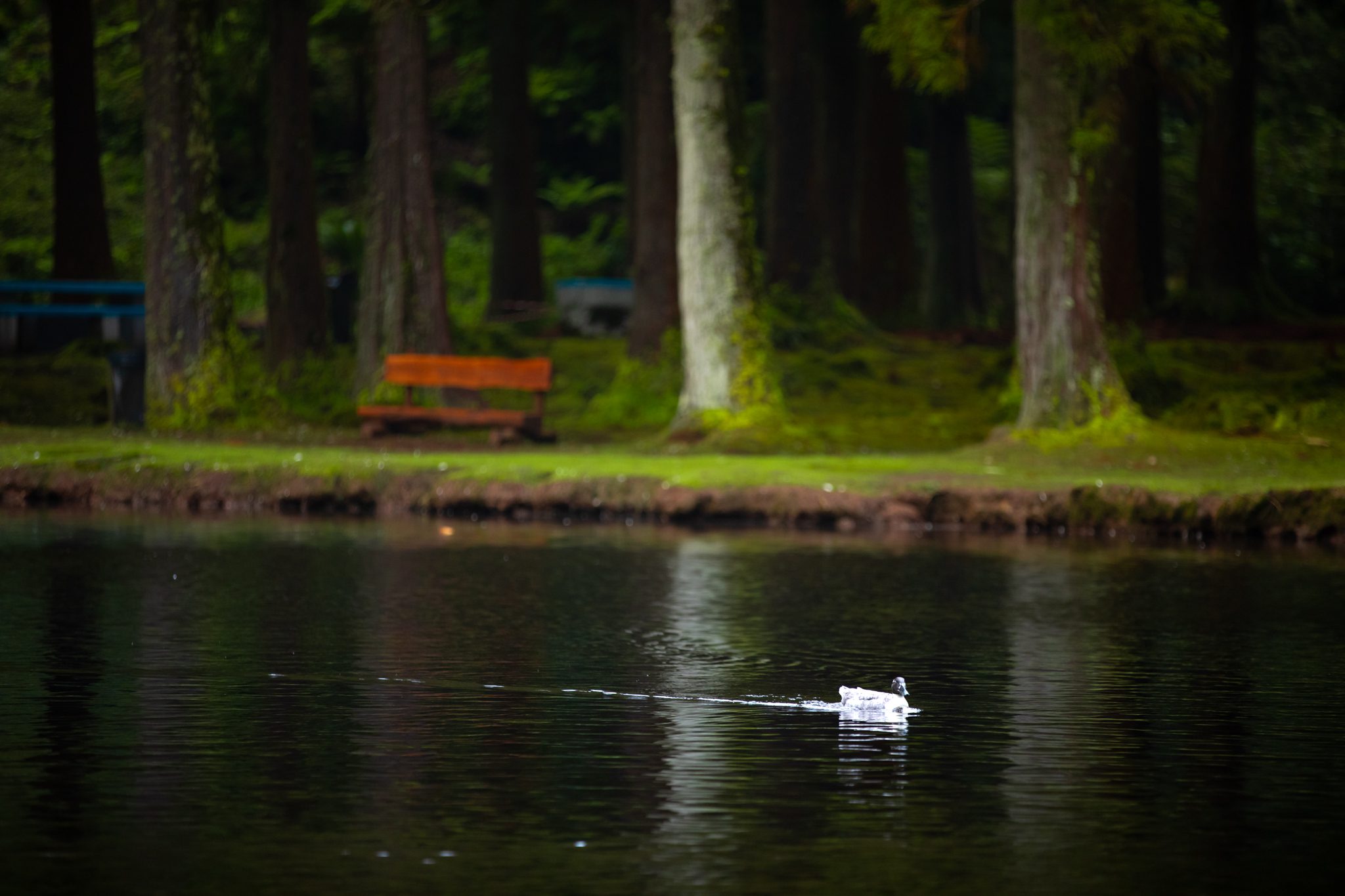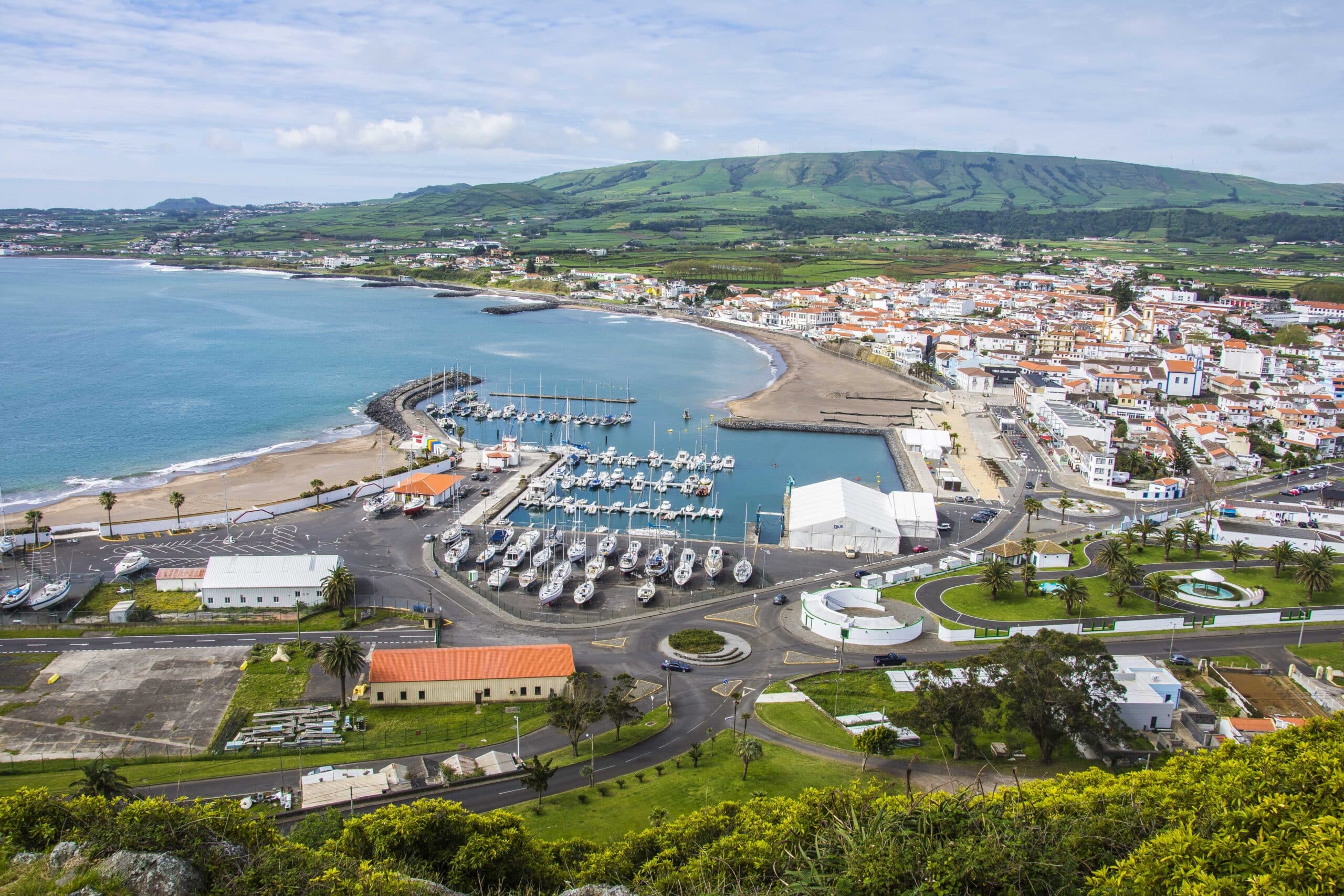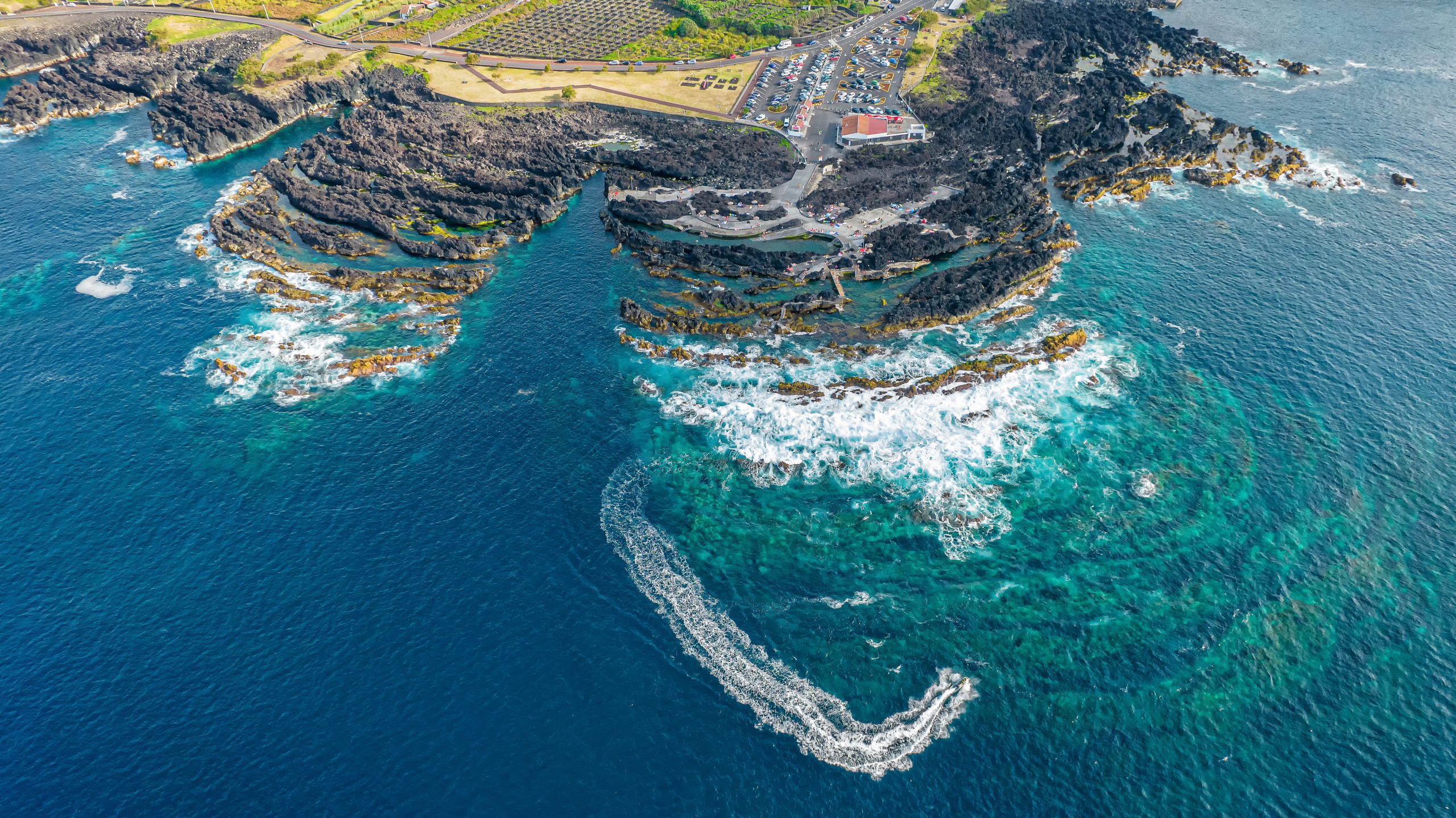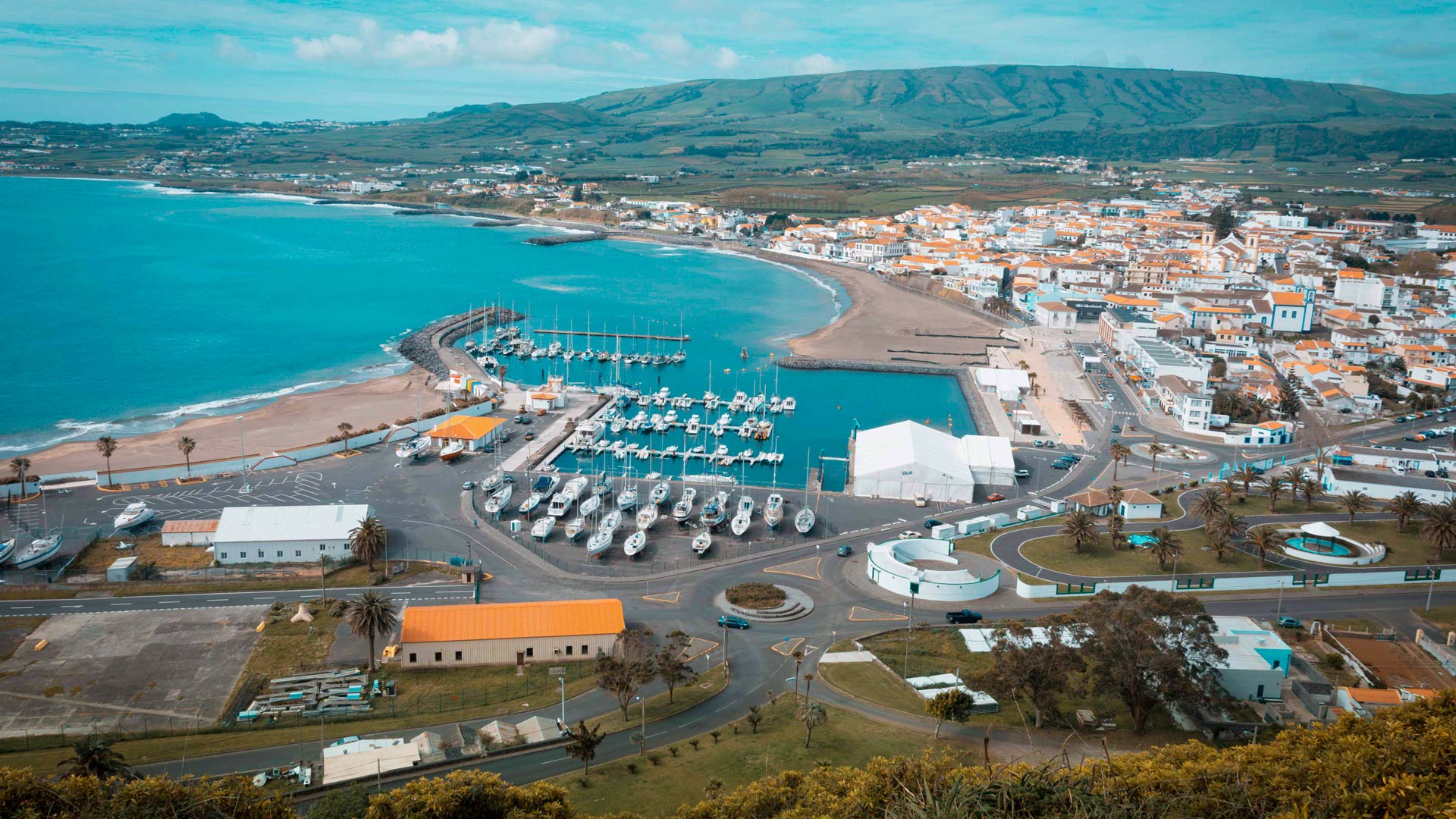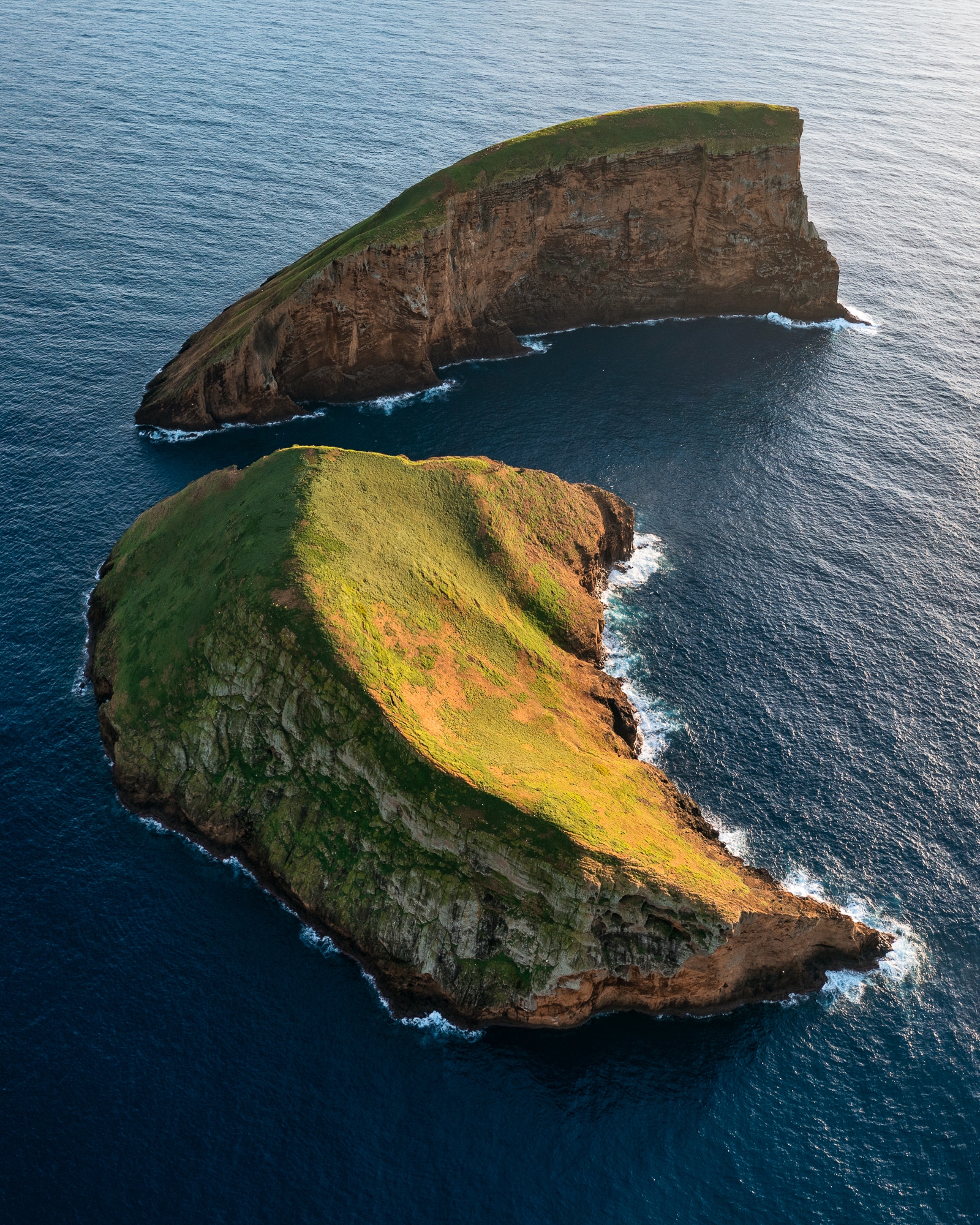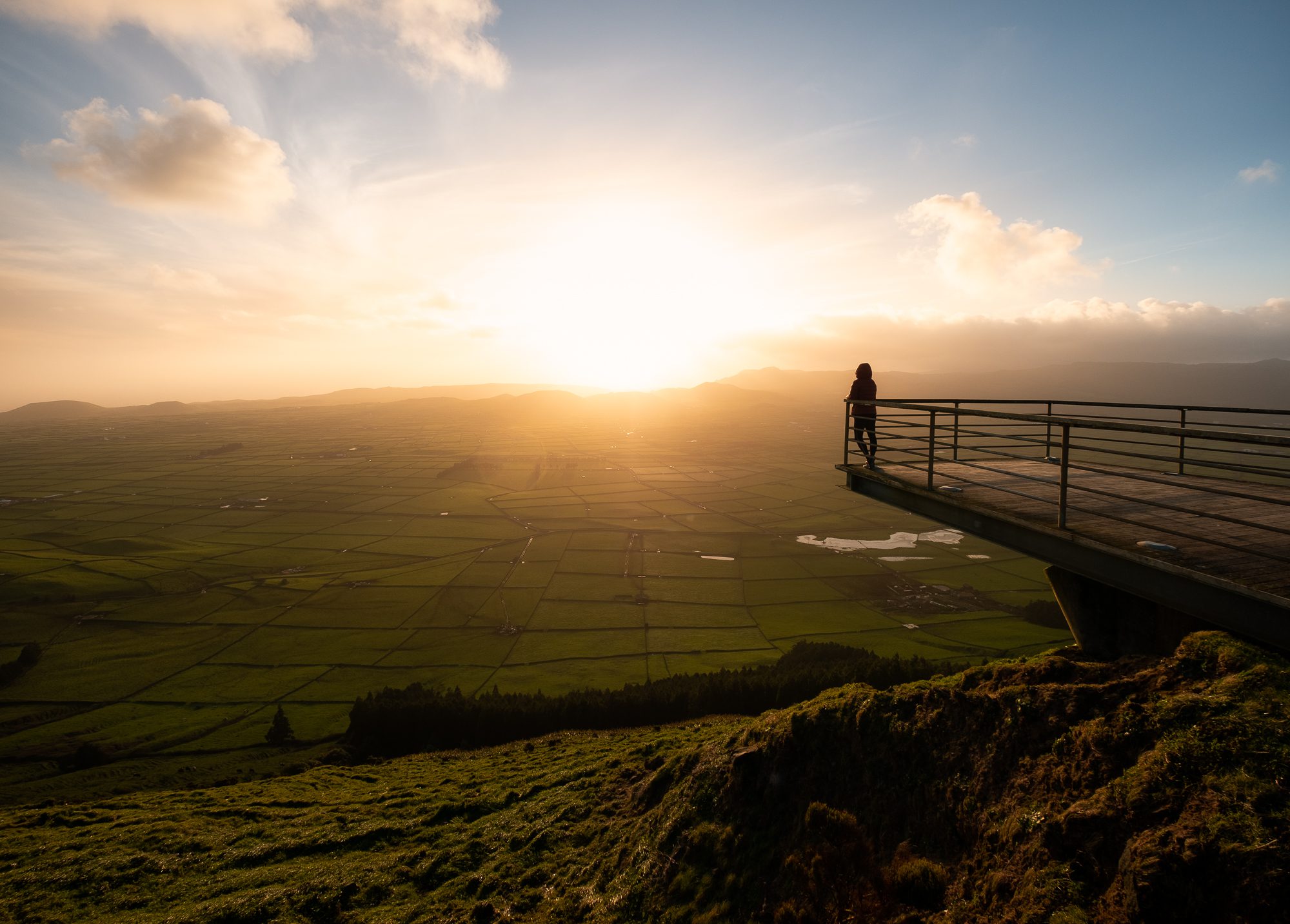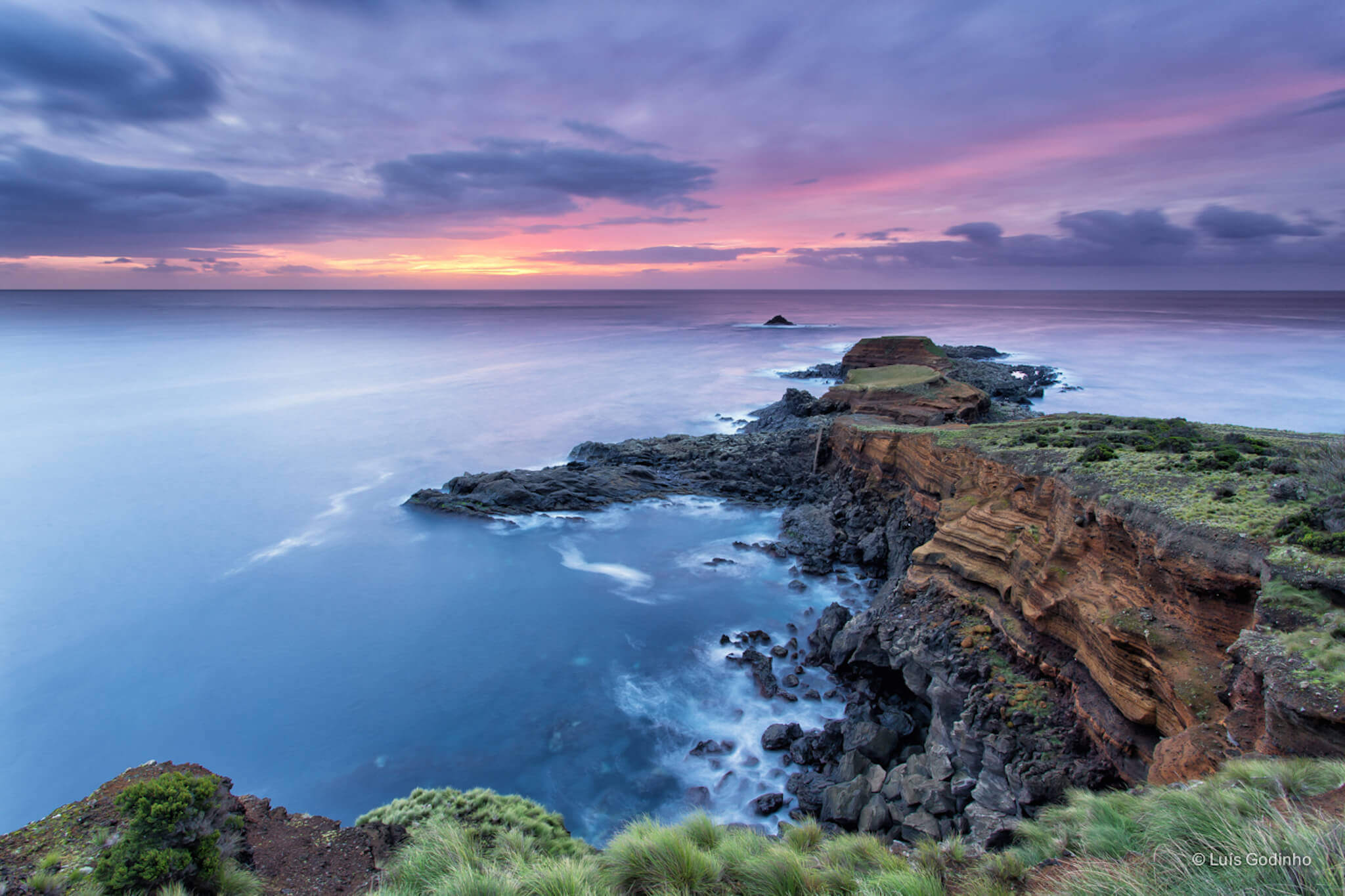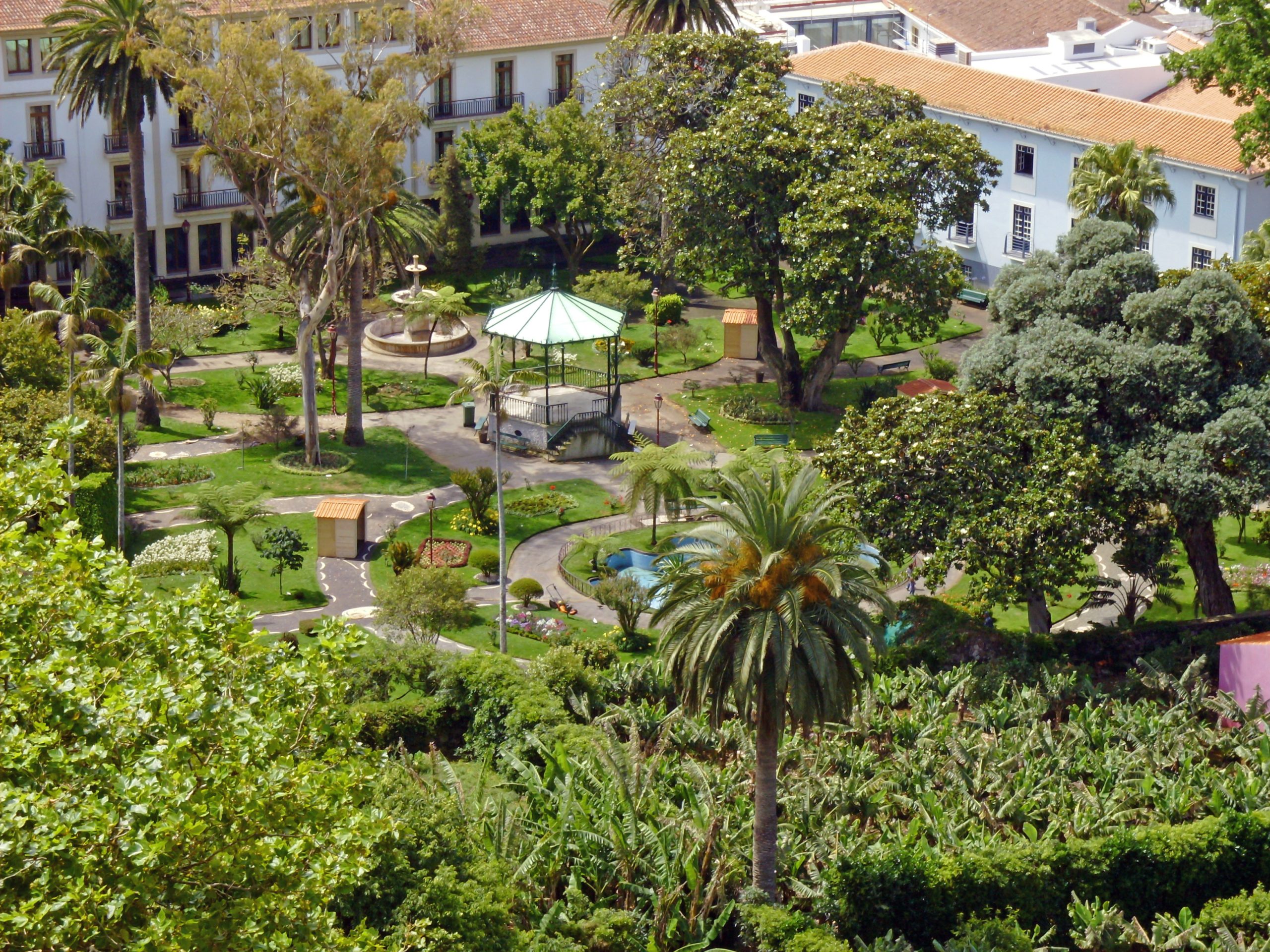Gruta das Agulhas is an impressive lava tube in the Porto Judeu (in Angra do Heroísmo), on Terceira Island. This unique geological formation is approximately 250 meters long and reaches a maximum height of 5.4 meters. It is a fascinating testament to the volcanic activity that has shaped the island over the years.
What is Gruta das Agulhas

Formation & Geological Features
Gruta das Agulhas is a fascinating volcanic lava tube located in Porto Judeu, on the island of Terceira in the Azores. The eruption of the Pico do Refugo volcano formed it when lava flows reached the eastern coast of Baía do Refugo. As the lava moved towards the sea, the outer surface cooled and solidified, while the interior continued to flow, creating a lava tube.
This natural process resulted in several galleries, with the main one being the Gruta das Agulhas. The cave is named after the secondary mineral formations of opal, which are needle-shaped crystals ranging from 0.2 cm to 0.5 cm in length, adorning the cave’s walls and ceilings. The cave also showcases four distinct levels of lava flows, creating lateral benches of rare beauty. The impressive structure and geological formations of Gruta das Agulhas provide a captivating glimpse into the volcanic history of Terceira Island.
History: Discovery & Exploration
Gruta das Agulhas was first explored in 1967 by the speleological association ‘Os Montanheiros’. It was identified and documented as having its extent and unique characteristics. During the explorations, infrastructure was installed to facilitate access and provide lighting within the cave. However, the erosive action of the sea damaged these structures, leading to the restriction of public access for safety reasons.
Fauna & Flora
Gruta das Agulhas is also notable for its rich biodiversity. It houses several troglobiotic species, including Pseudoblothrus vulcanus, Macarorchestia martini, and Pseudosinella ashmoleorum, as well as endemic species such as Phthiracarus falciformis, Orchestia chevreuxi, and Pseudosinella azorica. This biological diversity gives the cave high ecological and scientific value.
Plan Your Visit to Gruta das Agulhas

How to Get to Gruta das Agulhas
The journey from Angra do Heroísmo to Gruta das Agulhas is approximately 14 km. You can travel by car, motorcycle, taxi, or bicycle. The recommended route is along the EN1-1A and EN1-2A roads, which Google Maps indicates as the best route. The trip takes about 21 minutes by car, 54 minutes by bike, or approximately 3 hours on foot.
Accessibility & Pro Tips
Currently, access to the Gruta das Agulhas is restricted, requiring authorization and specialized technical guidance. Preserving this site is crucial for maintaining its fragile ecosystems and geological formations. They encourage visitors to respect environmental conservation guidelines when exploring the region.
Where to Eat
Click on the following link to find a place to eat near Gruta das Agulhas, in Porto Judeu. It will take you to Tripadvisor, where you can review the 10 best restaurants.
Where to Stay
Searching for the perfect place to stay? We’ve made it easy by filtering top accommodation options from Airbnb, Booking, and Trivago. Here, you’ll find the ideal place to stay and enjoy your visit!

Nearby Attractions
Refugo Natural Swimming Pool

Located in Refugo Bay, in the parish of Porto Judeu, just 2.5 kilometers from Ponta das Contendas, the Refugo Natural Swimming Pool is a unique seaside destination. Once used by fishing boats as a beach, it was later transformed into a swimming area. Today, it stands as one of the island’s most popular coastal spots.
This semi-natural pool is suitable for both children and adults, with an average water temperature of around 22°C during the summer months. The area offers excellent amenities for visitors, including a play area, showers, a bar, and toilets. It is a Blue Flag beach and also recognized as an Accessible Beach.
Related Articles: Ponta das Contendas | Biscoitos
Miradouro da Cruz do Canário
The Azores’ archipelago is renowned for its breathtaking viewpoints, and Terceira Island is no exception. One of the must-visit spots is Miradouro da Cruz do Canário, a peaceful perspective offering spectacular views of the Atlantic Ocean and the Islet of Cabras. From here, you can enjoy panoramic views of the island’s coastline. Additionally, on clear days, the island of São Jorge is also visible in the distance.
Salga Bay
For those who enjoy swimming and sunbathing by the sea, Salga Bay is the perfect destination. Located in the village of São Sebastião, Salga Bay features: Salga Beach and the Salga Natural Swimming Pool, which are particularly popular among younger visitors.

Did you know?
This bay was the site of the famous Battle of Salga in 1581. When the people of Angra resisted Spanish rule by releasing bulls to drive out the invaders. For two years, Terceira was the only independent Portuguese territory.
Salga Bay boasts a spacious grassy solarium, two pontoons with stairs leading to the sea, and a semi-natural swimming pool with excellent facilities like parking, accessible pathways, a bar, showers, and toilets. This Blue Flag beach is a safe and welcoming destination, perfect for a relaxing day by the ocean.
Check all our articles about each one of the most relevant points of interest on Terceira Island: Algar do Carvão | Biscoitos | Furnas do Enxofre | Gruta do Natal | Jardim Duque da Terceira | Lagoa das Patas | Miradouro Serra do Cume | Miradouro da Serra de Santa Bárbara | Monte Brasil | Ponta das Contendas | Praia da Vitória | Gruta das Agulhas | Ilhéus das Cabras | Miradouro do Facho
Complementary Information
Best Season to Visit the Azores
The Azores Archipelago boasts a unique climate that shapes its lush landscapes, making it a splendid year-round destination. With mild temperatures and minimal fluctuations, each season offers something unique. Spring averages 16 °C, summer reaches 21 °C, autumn cools to 18 °C, and winter remains mild at 14 °C.
→ For a detailed breakdown of the weather by month, check the following links 🌤️☔️: January | February | March | April | May | June | July | August | September | October | November | December
How to Get to the Azores
The Azorean Archipelago is easily accessible through numerous flight routes. Lisbon and Porto are the main entry points to the continent, with direct flights available to São Miguel (PDL), Terceira (TER), Faial (HOR), Pico (PIX), and Santa Maria (SMA). To find the best flight, use search engines like eDreams or Skyscanner. These platforms enable you to compare prices and schedules from various airlines in one convenient location.
For more details on how to get to the Azores, take a look at our complete guide. But what if you want to explore beyond your arrival island? We’ve got you covered!
- Azores airports 🛬
- Flights between islands ✈️
- Ferries between islands ⛴️
- Which island to choose? 🏝️
- What airlines fly to the Azores? 🛩️
→ Once you’ve found the perfect route, book your tickets and get ready to experience one of the world’s most stunning island groups!
Travel Essentials
Essential Information for your Azores trip: Azorean Language & Phrases 🗣️ | Currency & Banks 💵 | Credit Cards & Traveler’s Cheques 🏧 | Driving in the Azores 🚗 | Electricity 🔌 | Experiences & Tours 🗺️ | Health & Safety 🩺 | Internet & Wi-Fi Access 🛜 | Phones & Mobile Service 📞 | Post Offices & Buying Stamps ✉️ | Public Holidays 🏖️ | Shopping 🛒 | Time & Daylight 🕒 | Whale Watching Guide 🐳 | Best Island to Visit 🏞️
Useful Tools & Apps
The weather in the Azores can be variable, so it’s helpful to use some apps before visiting the islands. Spotazores provides live camera feeds from the main tourist attractions, allowing you to check the weather and plan your visit. For accurate weather predictions, use Windy or Windguru — they provide the most reliable predictions.
Conclusion
The Gruta das Agulhas is one of Terceira Island’s hidden treasures, combining geology, biodiversity, and history in a single location. Its discovery and preservation highlight the importance of protecting the Azores’ natural heritage, not only for scientists but for everyone seeking authentic natural wonders.
Authors’ Note
I am pleased to inform you that all the recommendations in this article are based on my personal experience and observations. As the author, I have personally visited each attraction mentioned, ensuring that every suggestion is grounded in first-hand knowledge and genuine enthusiasm.
FAQs
Gruta das Agulhas is located in Porto Judeu, on the island of Terceira in the Azores archipelago. It is renowned for its impressive geological formations and natural beauty.
Yes, Gruta das Agulhas is open to the public, but access requires prior authorization and specialized guidance. It is essential to follow safety and environmental conservation guidelines.
Gruta das Agulhas’s main attraction is its unique geological formations, such as stalactites and stalagmites. The cave is also well-known for its “needles” (opal crystals) adorning its walls and ceilings.
The best time to visit Gruta das Agulhas is during spring and summer when the weather is milder and conditions for exploration are ideal. However, visits require authorization, so it’s essential to check availability before planning your trip.
Photo Gallery








